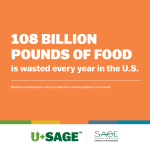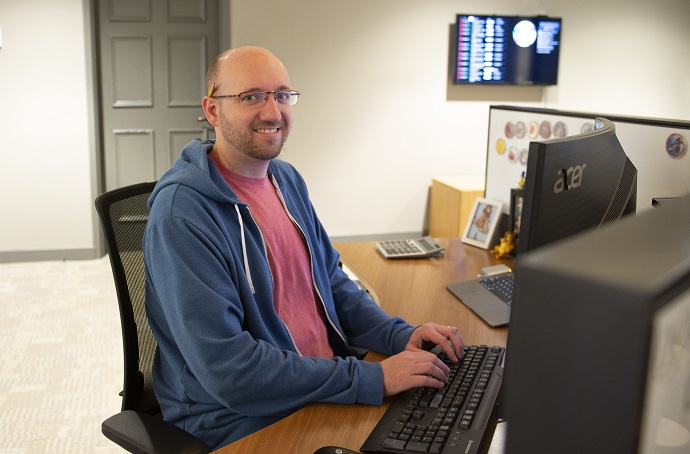When it comes to doing things from scratch, SAGE walks the walk. To our guests in the dining halls, the term “from scratch” means fantastic food that’s made fresh daily by SAGE Chefs. But what they might not realize is that the tools that make these awesome meals happen every day are also made from scratch ꟷ by SAGE Software Engineers, like John Noyes.
John and his team in the Technology Department develop and create virtually every behind-the-scenes process that makes SAGE tick. Those awesome menus designed just for your community? You can thank Menu Builder for them. Amazing recipes with accurate ingredient lists and allergen tags? The Recipe Collection is behind those. How do your Team Members clock in and out every day? With our in-house time clock software. The Touch of SAGE™ app that allows you to provide feedback and create custom allergen filters? Yup, they built that, too.
We asked John some questions about what it’s like to work at SAGE and help build the software that makes SAGE run.
How long have you been at SAGE?
I started in 2006 — 13 years. I began as a Help Desk Support Technician.
What was Help Desk life like?
It gave me a great perspective. Answering those calls gave me a sense of the real world in the field. And I think that’s come in handy now as I write programs to help run the business. I know that the people using some of these applications have a lot on their plates. It’s not just cooking food. They have a heavy documentation burden. They’re busy, they’re on their feet. They don’t have time to push paper. I kept these things in mind when we redesigned SAGEware®, our financial reporting software.
How is your role here different from a software engineer at other companies?
SAGE has about 275 accounts. Each one of these is different. We’re custom, so the software has to be custom, too. We have an in-house development team that works on dozens of different apps.
At big software companies, engineers might work on just one very small feature of one application. Here, we do it all, and the more you know about this industry, the better. We tailor our programs for exactly what we need. And we lean on each other as a team. We work together to come up with solutions.
What do you think is a key to success in software engineering?
Communication. There’s the stereotypical idea of a programmer who works alone, coding in a dark room. But to succeed, you really need to understand your users. You have to communicate with them.
When we redesigned SAGEware®, we put a focus group together that represented the wide range of users we service. For six months, we met virtually to talk about what works and what doesn’t. It gave us a good sense of the real-world scenario. If you don’t do this ꟷ if you don’t communicate with your users to understand their wants and needs, whatever you build is just not going to work.
What qualities make you well-suited for your job?
I like communicating, and I like building things. It’s important to be a problem solver, and to try and anticipate things before they happen. It’s also good to be reflective, so you can continually improve.
It’s satisfying to me to be able to make something, and even more satisfying to see people use something I’ve helped make. I like being a part of that, feeling like I’ve made an impact on the company in a positive way.
What do you like about SAGE’s company culture?
There’s a lot of flexibility and opportunities. What makes us unique is that we get to do different things and work on a range of projects.
When I started here, I really felt like the people I worked with were family. And even though we’ve grown so much in 13 years, I can still say that it feels that way. I know that I can go to the owners at any time and talk to them about an idea I have. They really care.









